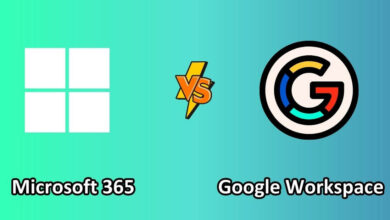In the world of finance and accounting, there are two terms that hold immense significance: Trial Balance and Balance Sheet. They are fundamental tools in ensuring the accuracy and transparency of financial records. In this blog, I will delve into these concepts, shedding light on their roles and differences.
Our focus will be on understanding the Trial Balance and Balance Sheet, their features, differences, and how they play crucial roles in accounting. By the end of this blog, you’ll have a comprehensive grasp of these concepts and their relevance in financial management.
Trial Balance Vs. Balance Sheet (A Comparison)
| Trial Balance | Balance Sheet |
|---|---|
| A trial balance is a financial statement that lists the balances of all a company's general ledger accounts at a specific point in time, typically at the end of an accounting period. | A balance sheet is a financial statement that provides a snapshot of a company's financial position at a specific moment in time, usually at the end of an accounting period. |
| Trial Balance is an internal document used for the purpose of error-checking during the accounting cycle. | A balance sheet is an external financial statement providing an overview of a company's financial position at a specific point in time. |
| A trial Balance is prepared throughout the accounting cycle to catch errors as they occur, | A balance sheet is typically prepared at the end of an accounting period, such as a quarter or year, summarizing the financial position at that moment. |
| It includes all ledger accounts, showcasing all accounts and their balances, whether they are assets, liabilities, or equity accounts. | It focuses on the balances of assets, liabilities, and equity only, presenting a structured summary. |
| Trial Balance is mainly used by accountants and auditors for internal accuracy checks to ensure the integrity of accounting records. | A balance sheet is essential for investors, creditors, and management for making financial decisions. |
| Trial Balance is a simple list of ledger accounts and their balances, without a specific structure. | A balance sheet has a structured format, with assets on the left side, and liabilities and equity on the right side, making it easily interpretable for external stakeholders. |
| The data for a trial Balance is sourced directly from the company's general ledger. | The data for a Balance Sheet also comes from the general ledger or trial balance, but it's selectively sourced. |
What is a Trial Balance?
A Trial Balance is like the checkpoint of the accounting journey. It’s a list of all the ledger accounts with their respective debit and credit balances. The primary role of a Trial Balance is to ensure that the accounting entries are recorded accurately and that the debits equal the credits.
Preparing a Trial Balance involves listing all ledger accounts and their balances. The purpose of this step is to catch any errors in the double-entry bookkeeping system. If the debits and credits don’t match, it indicates an issue that needs to be resolved before moving on to financial statements.
Five Features of Trial Balance
- Accuracy Checker: A Trial Balance helps in identifying errors and ensures that debits and credits are balanced.
- Internal Document: It’s used internally during the accounting process to ensure the books are in order.
- Summarized Ledger Accounts: It compiles all ledger accounts, making it easier to review.
- Preparation Frequency: Trial Balances can be prepared frequently, aiding in the early detection of errors.
- Unadjusted Balances: It includes both debit and credit balances before adjustments.
What is a Balance Sheet?
A Balance Sheet refers to a snapshot of a company’s financial position at a specific point in time. It’s a key document for stakeholders, as it provides an overview of a company’s assets, liabilities, and equity. It’s crucial for financial reporting and decision-making.
The three main components of the balance sheet are:
- Assets: Everything a company owns, from cash and investments to physical assets like buildings.
- Liabilities: Obligations and debts, including loans, accounts payable, and accrued expenses.
- Equity: The residual interest in the assets of the entity after deducting liabilities. It’s essentially the ownership portion.
Features of the Balance Sheet
- Snapshot in Time: The Balance Sheet provides a financial snapshot at a specific moment, typically the end of a fiscal period.
- Categorization: It categorizes assets, liabilities, and equity, allowing for clear analysis.
- External Reporting: The Balance Sheet is a key document for external stakeholders, including investors and creditors.
- Liquidity Assessment: It helps evaluate a company’s ability to meet short-term and long-term obligations.
- Owner’s Equity: It shows the owners’ stake in the company, which is vital for assessing a company’s financial health.
Key Differences Between Trial Balance and Balance Sheet
Intriguingly, Trial Balances and Balance Sheets differ in various aspects, such as purpose, timing, and content. Here are five key differences:
- Timing: Trial Balance is prepared throughout the accounting cycle, while the Balance Sheet is typically prepared at the end of an accounting period.
- Scope: Trial Balance includes all ledger accounts, whereas the Balance Sheet focuses on the balances of assets, liabilities, and equity.
- Users: Trial Balance is mainly used by accountants and auditors, whereas the Balance Sheet is essential for investors, creditors, and management.
- Format: Trial Balance is a simple list, whereas the Balance Sheet has a structured format, with assets on the left and liabilities and equity on the right.
- Source of Data: The data for a Trial Balance is sourced directly from the company’s general ledger. On the other hand, the data for a Balance Sheet also comes from the general ledger, but it’s selectively sourced.
The Role of Trial Balance in the Accounting Cycle
The Trial Balance plays a crucial role in the accounting cycle. It typically comes after the journal entries and the general ledger but before the financial statements. It serves as a checkpoint to ensure that all accounting transactions are correctly recorded. This step is essential for maintaining the accuracy and integrity of financial data.
The Trial Balance acts as a detective. If the total debits and credits do not match, it indicates an error in the accounting records. This could be due to data entry mistakes, incorrect account classifications, or omissions. By identifying these discrepancies, accountants can correct them before moving on to the preparation of financial statements.
Analyzing the Balance Sheet
Analyzing a Balance Sheet involves using various financial ratios to assess a company’s financial health.
- Liquidity Ratios: These ratios, like the current ratio and quick ratio, help assess a company’s ability to meet short-term obligations. They compare current assets to current liabilities.
- Solvency Ratios: Ratios like debt-to-equity and debt ratios evaluate a company’s ability to meet long-term obligations. They focus on the relationship between debt and equity.
- Profitability Ratios: These ratios, including net profit margin and return on equity, measure a company’s ability to generate profit relative to its assets or equity.
Similarities Between Trial Balance and Balance Sheet
While Trial Balances and Balance Sheets serve different purposes, they share common ground:
Accuracy: Both documents aim to ensure the accuracy of financial records. Trial Balance checks the internal accuracy of debits and credits, while the Balance Sheet provides an accurate snapshot of a company’s financial position.
Double-Entry System: They both rely on the double-entry accounting system, where every transaction has an equal and opposite effect on assets, liabilities, and equity.
Internal and External Use: Both documents serve internal and external purposes. Trial Balances are mainly for internal use, ensuring the accuracy of records, while Balance Sheets are external documents used for reporting to stakeholders.
Conclusion
In conclusion, Trial Balance and Balance Sheet are two vital components of accounting, each with its unique role and importance. Understanding these tools is essential for maintaining accurate financial records and making informed financial decisions.
Whether you’re a business owner, investor, or accountant, a firm grasp of these concepts is indispensable in the world of finance and accounting. So, keep these tools in your financial toolkit, and you’ll be better equipped to navigate the complex world of numbers and ledgers.
FAQs about Trial Balance vs. Balance Sheet
What is the Main Difference Between a Trial Balance and a Balance Sheet?
The main difference between a trial balance and a balance sheet is their purpose and timing. A trial balance is an internal document used during the accounting process to ensure the accuracy of ledger accounts, while a balance sheet is an external financial statement that provides a snapshot of a company’s financial position at a specific point in time.
What are the Key Elements of a Balance Sheet?
The key elements of a balance sheet include assets (what the company owns), liabilities (what the company owes), and equity (the ownership interest in the company). These elements provide a clear picture of a company’s financial position.
What are Some main Objectives of a Trial Balance?
The main objectives of a trial balance are to ensure the accuracy of accounting records, identify errors or discrepancies in ledger accounts, facilitate the preparation of financial statements, and aid in the early detection and correction of accounting mistakes to maintain the integrity of financial data.


